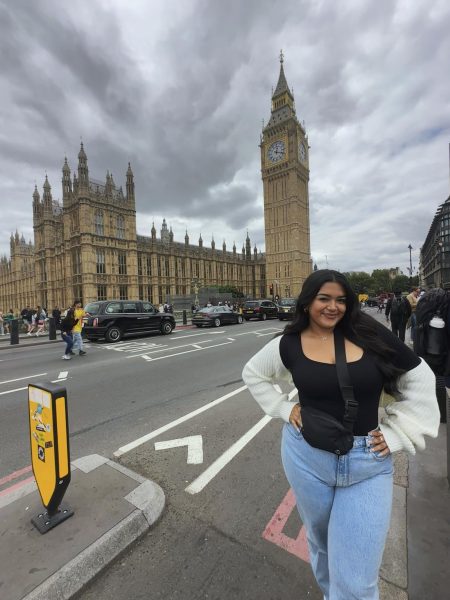As the Rosary community observed Easter and other holy days from April 17 to April 27, news broke of Pope Francis’s passing on April 21, marking a solemn moment that overshadowed a traditionally joyful season. His death marked a profound day of mourning during the Easter Season for the Catholic Church and the world as his legacy is remembered.
Father Ian said, “It’s a great reminder that even when the light of Easter starts, we still have a choice. Jesus never forced himself on us. He never pushes. He simply invites: ‘Do not be afraid.’ That was one message Pope Francis wanted to whisper into the heart of the Church and into each one of us.”
Pope Francis was born in Buenos Aires, Argentina, making him the first pope from the Americas as well as the first Latino pope. Pope Francis was ordained in 1969 as a member of the Jesuit order. In 1998, he became the Archbishop of Buenos Aires and was appointed a cardinal by Pope John Paul II in 2001. After the resignation of Pope Benedict XVI, Pope Francis was elected the 266th pope in 2013. Pope Francis left behind a legacy of advocacy, humility, reform, compassion and so much more. When asked about Pope Francis’s legacy, religion teacher Mrs. D’Alba shared, “Pope Francis leaves behind a legacy of exemplifying openness. He guided the Church to be more welcoming to those on the margins of society. He reached out to people from all walks of life, but, like Jesus, he was not always accepted by those closest to the Church.”
A few highlights from his papacy include:
His election as pope: On March 13, 2013, Cardinal Jorge Mario Bergoglio took the name of St. Francis of Assisi as he was elected pope on the second day of the Conclave. Pope Francis made history as the first pope from the Western Hemisphere and the first pope of the Jesuit order.
Laudato Si’: On May 24, 2015, Pope Francis published “Laudato Si’,” an encyclical that translates to “Praise be to you” in Italian, calling for urgent action to care for our common home: the Earth. In this encyclical, Pope Francis emphasizes the importance of interconnectedness and working towards a more sustainable and equitable stewardship of the Earth.

Address to Congress: On September 24, 2015, during Pope Francis’s first visit to the United States, he addressed a joint meeting of Congress. Pope Francis spoke on the topics of social justice, immigration, environmental protection and the importance of cooperation. In this address, he emphasized the importance of protecting human dignity, caring for the vulnerable and seeking the common good through moral leadership to lawmakers.
A revision: On August 2, 2018, Pope Francis ordered a revision of the Catechism of the Catholic Church to state that the death penalty is morally inadmissible.
A sense of hope: As the world was amidst a pandemic, Pope Francis, in a fairly empty St. Peter’s Square, held and livestreamed a prayer service on March 27, 2020. In this prayer service, he delivered a blessing, “urbi et orbi” (to the city and the world).
In the wake of Pope Francis’ impactful papacy, which is widely regarded as successful and impactful, the question arises: How does the Catholic Church navigate the future and continue its mission after the passing of a pope?
Here are the Steps the Catholic Church takes after the death of a pope:
- A Vatican Official named the Camerlengo confirms the death and takes charge.
- The Church declares a mourning period of nine days, which includes funeral masses and special prayers, similar to a novena.
- The Vatican office slows down or even pauses as the Church is temporarily without a leader. This period is called “Sede Vacante,” which translates to “The Seat is Empty.”
- Cardinals from around the world gather in the Vatican as they prepare to elect a new pope.
- The Conclave commences. Only cardinals under the age of 80 can vote, and they enter the Sistine Chapel in secrecy. Voting occurs up to four times each day until they achieve a two-thirds majority.
- A new pope is elected! The new pope accepts the role and chooses a saint’s name to be used throughout his papacy.
On average, a Conclave takes three days, but it can last longer, as the election of Pope Gregory X took nearly three years. During the Conclave, we as Catholics can take the time to pray for guidance of the cardinals in electing a pope; we can attend Masses and vigils and also follow updates! In the Sistine Chapel, smoke signals are used during papal elections: black smoke indicates that a new pope has not yet been elected, while white smoke signifies that a new pope has been elected. As we wait for the white smoke, let’s remember to pray for Pope Francis and those electing the Church’s new leader.








